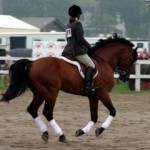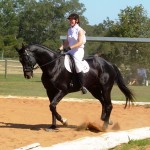If you were one of the people who used the techniques I suggested for teaching trot, thanks for your positive feedback! When you teach some-one how to perform a skill it makes you analyze the whole process in a lot more depth. So when I am training some-one how to teach a skill I analyze both the skill development and the teaching process in a lot more depth. People have been asking me about teaching canter to beginners, so I have made this video with some tips on both the skill development of the learner and the teaching process for the horse riding instructor. Click Here For A Video With Tips On Teaching Canter Students enrolled in our new updated courses will have access to these videos and many more as part of their Student Resources. If you enroll now, you can save … [Read more...]
Teaching Canter Video
How to Properly Canter on a Horse
When you are learning how to canter on a horse, there are many problems that the movement of cantering can cause. These tips will minimise those problems so you can enjoy cantering a horse. How To Canter Cantering a horse is much the same as sitting trot, the seat (pelvis, thighs and hip joints) will be required to follow the canter movement. The seat should flow and remain in contact with the saddle forming a series of arcs (which may form an outline simular to that of the lower side of an egg which is laid on its side). It can be described that there are 3 sensations to be felt at canter: First, a lowering or sinking of the seat. This coincides with the first hind-leg in the canter sequence coming down to touch the ground. Then, sliding or floating forward in the saddle. The … [Read more...]




